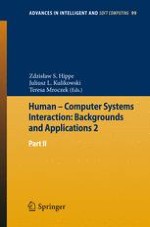This volume of the book contains a collection of chapters selected from the papers which originally (in shortened form) have been presented at the 3rd International Conference on Human-Systems Interaction held in Rzeszow, Poland, in 2010. The chapters are divided into five sections concerning: IV. Environment monitoring and robotic systems, V. Diagnostic systems, VI. Educational Systems, and VII. General Problems. The novel concepts and realizations of humanoid robots, talking robots and orthopedic surgical robots, as well as those of direct brain-computer interface are examples of particularly interesting topics presented in Sec. VI. In Sec. V the problems of skin cancer recognition, colonoscopy diagnosis, and brain strokes diagnosis as well as more general problems of ontology design for medical diagnostic knowledge are presented. Example of an industrial diagnostic system and a concept of new algorithm for edges detection in computer-analyzed images are also presented in this Section. Among the educational systems, in Sec. VII the remote teaching and testing methods in higher education, a neurophysiological approach to aiding the learning process, an entrepreneurship education system and a magnetic levitation laboratory systems are presented. Sec. VII contains papers devoted to selected general human-computer systems interaction problems. Among them the problems of rules formulation for automatic reasoning, creation of ontologies, Boolean recommenders in decision systems and languages for proteins structural similarity description can be mentioned. The chapters included into both, I and II volumes of the book illustrate a large variety of problems arising and methods used in the rapidly developing Human-System Interaction research domain.
